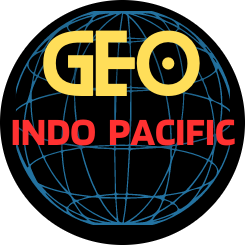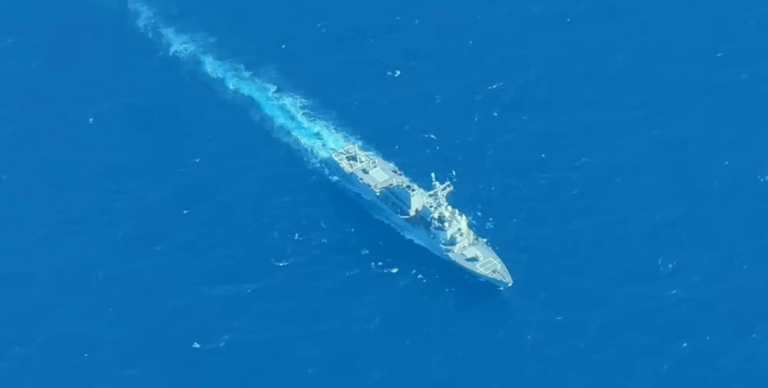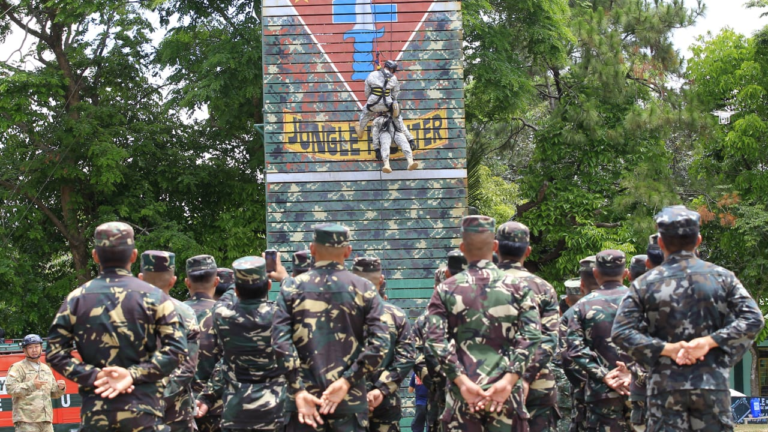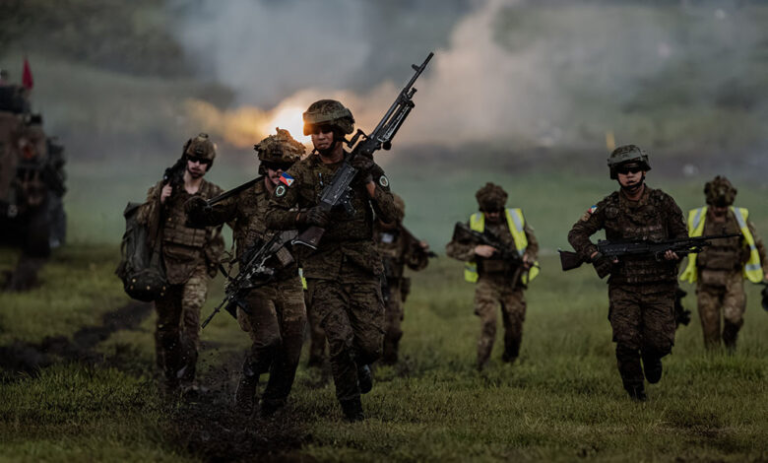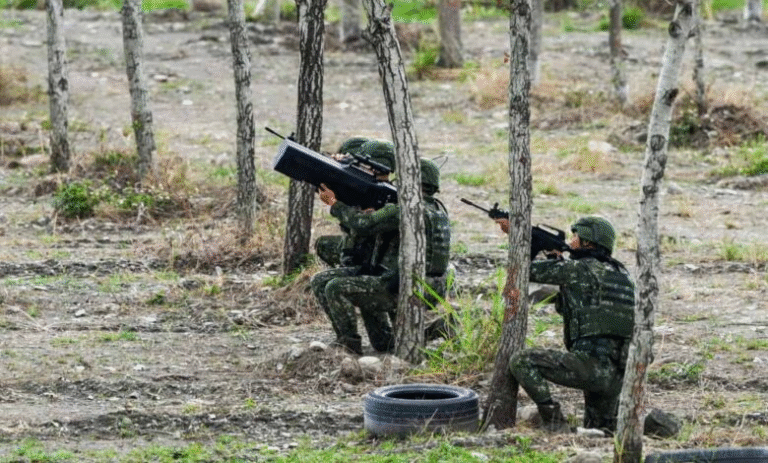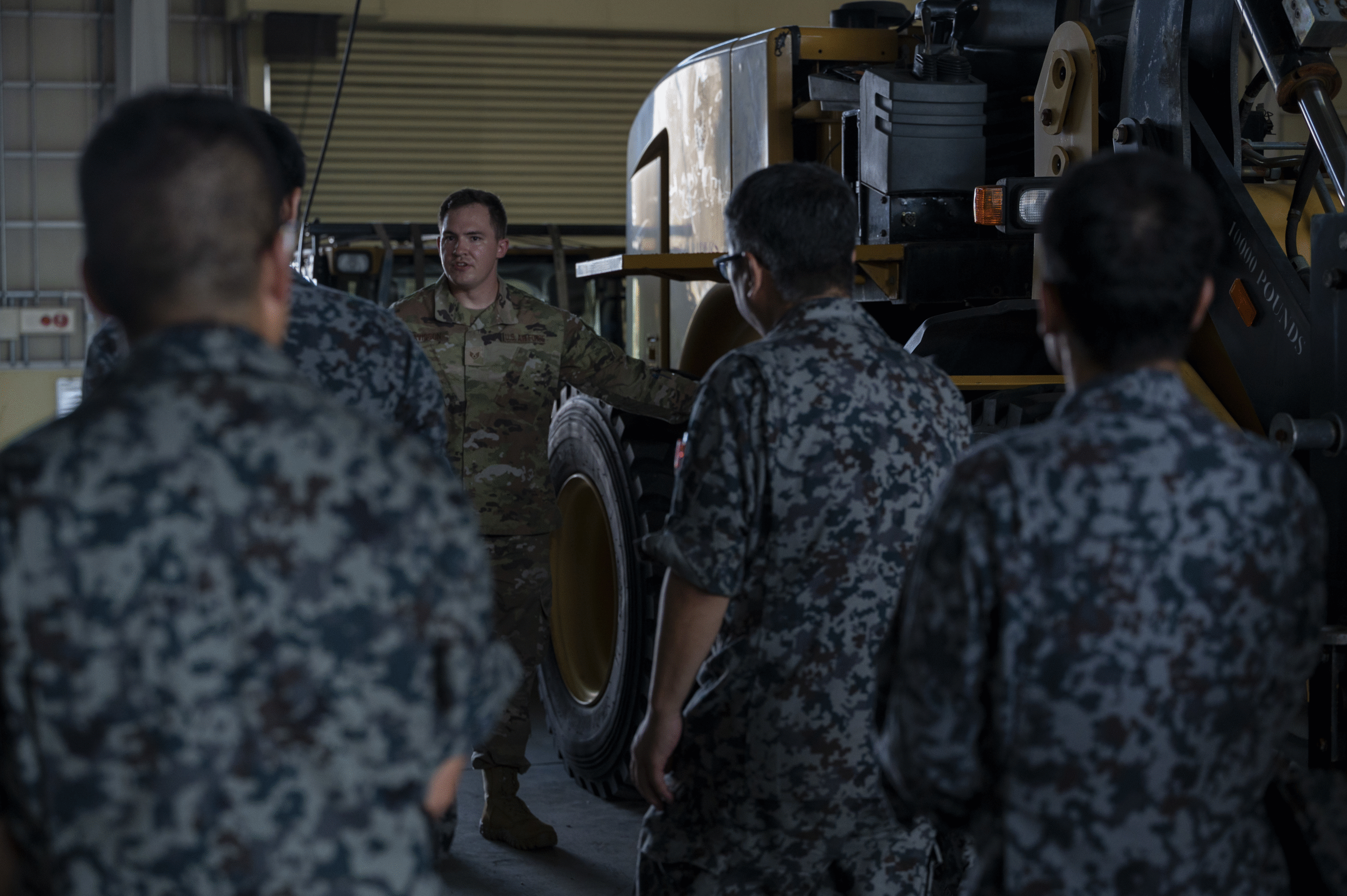
JXR is a joint exercise held annually since 1999, and this year’s exercise marked the largest-scale joint disaster response drill since the establishment of the JJOC in March 2025.
During the exercise, participants responded to a notional inland earthquake in Japan’s Kanto region by coordinating with local governments, including Tokyo, Kanagawa, Saitama, and Chiba prefectures, and 14 disaster-related agencies, including the National Police Agency and Japan Coast Guard. USFJ members participated in the exercise as part of the new JJOC Coordination Team, located at the Akasaka Press Center in downtown Tokyo. The JCT was established in April as one of the first new elements of USFJ’s effort to transform into a Joint Forces Headquarters with enhanced operational capabilities and the ability to command and control forces in Japan.
The exercise simulated an earthquake with its epicenter directly under Tokyo. This hypothetical event resulted in significant road damage and soil liquefaction, which in turn created major congestion on emergency routes and posed serious challenges to access affected areas throughout the city. The exercise served as a test of both disaster response capabilities and bilateral cooperation in mitigating the aftermath of a natural disaster.
JSDF Major Go Rikiishi, an action officer in the JJOC’s Bilateral Operations Office, said this iteration of JXR provided real-time coordination between the U.S. and Japanese forces.
“JJOC and USFJ are building an increasingly strong relationship through multiple training events, and the latest being JXR,” Rikiishi said. “While this was our first time training at the Akasaka press center, we quickly realized that the most important aspect is not the location, it’s the face-to-face coordination. We will continue to enhance this coordination to contribute to the security of Japan.”
U.S. Army Lt. Col. Raffi Mnatzakanian, USFJ Chief of Plans and campaigning lead of the JCT, said that the establishment of the JJOC and the JCT have significantly enhanced USFJ’s ability to coordinate and participate in critical disaster response operations with the JJOC and the Japanese government.
“We now have a USFJ that is growing in responsibility to not only coordinate necessary activities that would happen in here in Japan [in the event of a disaster], but to take a more active role and actually command-and-control those forces that are supporting our allies,” Mnatzakanian said.
U.S. Marine Corps Lt. Col. Bradley DiDuca, Deputy Director of the JCT, said the transformation efforts support relationships between USFJ and the JJOC.
“First and foremost, we have much deeper relationships with our Japanese counterparts,” he said. “In part, it’s proximity – being here at the Akasaka Press Center, much closer to Ichigaya than Yokota. That enables more face-to-face interactions on a more regular basis.”
Japan has faced major natural disasters in the past, such as the March 2011 Triple Disaster that prompted Operation Tomodachi, and is likely to do so in the future, Mnatzakanian said. He added that preparing for potential disasters through exercises is part of USFJ’s commitment to strengthening the Alliance.
“You don’t have to be a fortune teller to know that Japan will probably continue to experience earthquakes and tsunamis,” Mnatzakanian said. “But the ways in which we prepare for natural disaster response are absolutely applicable to the way we would contribute to the defense of Japan and regional security through a robust Alliance coordination mechanism.”
Operation Tomodachi was a joint humanitarian assistance and disaster relief operation conducted in response to the Great East Japan Earthquake in 2011, where the U.S. and Japan provided joint relief efforts to the affected areas, highlighted the importance of effective communication, interoperability and bilateral military cooperation.
